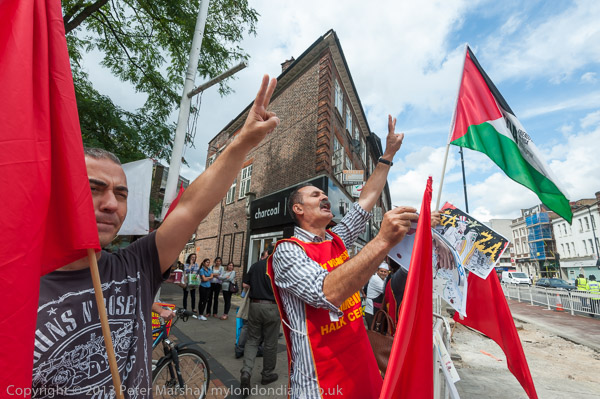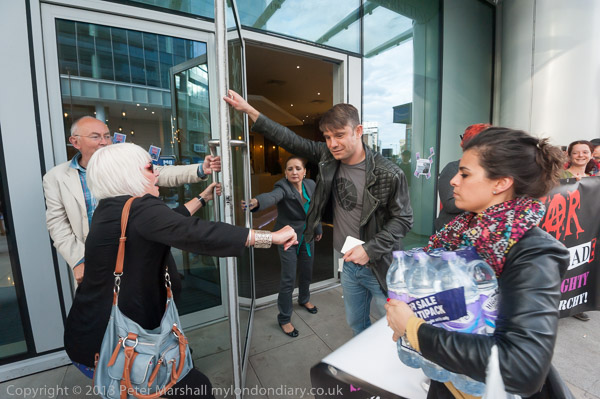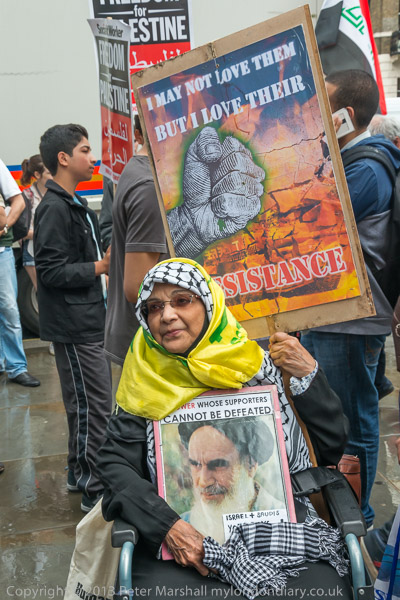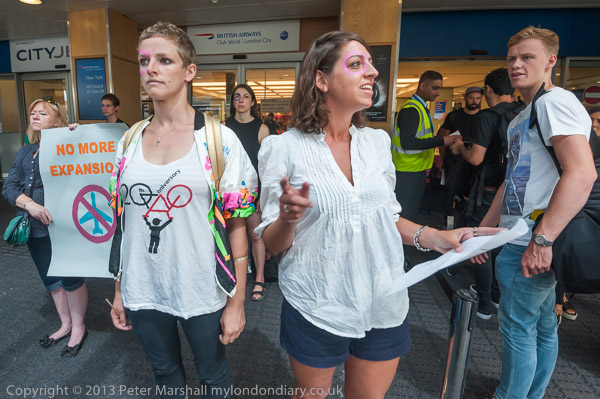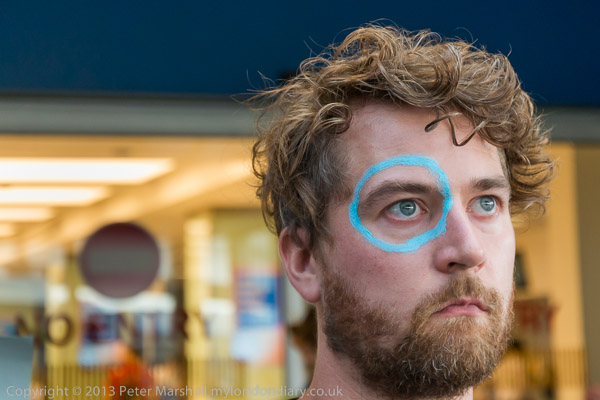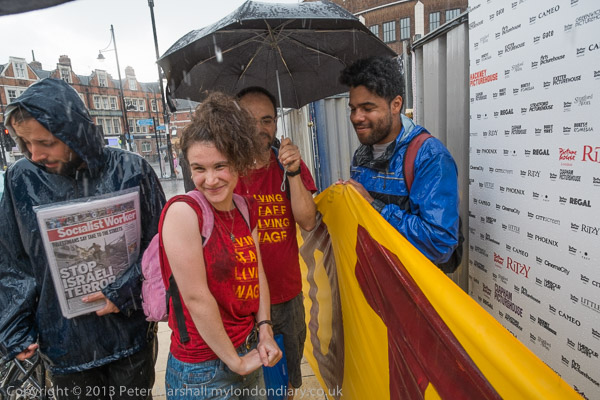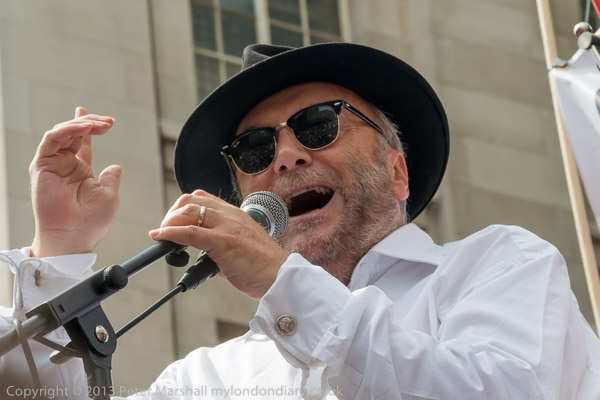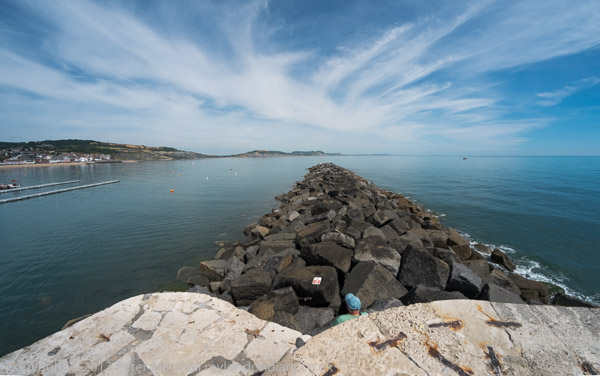
Not London, but its convenient to post my holiday snaps in My London Diary, and there were some London connections. We were staying just a few miles from Lyme Regis, and one of its more famous sons was Thomas Coram, the founder of the Foundling Hospital in London’s Coram’s Fields, and there is a window for him in the parish church.

But for most people Lyme Regis means fossils and possibly (largely thanks to the French Lieutenant’s Woman) The Cobb, a slightly odd shaped harbour wall. We did go looking for fossils – and found quite a few small ammonites – but none were really worth photographing, and the rocks they were on were either far too large to move or too crumbly to keep, though we did take a couple of lumps back to show the friends we were sharing an ex-hotel in the middle of nowhere with.

The slope is handy to allow the waves to run back off, though the sea was pretty flat when we were there, and most of the time there were quite a few people walking along it.

The only really good fossils we saw were in shops and the museum – and the museum also has quite a few interesting local photographs, including some taken by Roger Mayne (1929-2014), best known for his work on children playing in Southam St and elsewhere in North Kensington between 1956 and 1961. When I met him he complained that people never realised he had ever taken anything but these pictures, but looking at the work on his own web site these pictures do seem to me to stand out.
In 1974 he moved together with his wife, playwright Ann Jellicoe to Lyme Regis, where she developed the idea of community plays and became, along with John Fowles, co-curator of the Lyme Regis Museum for some years – and later both Jellicoe and Mayne were patrons of the Town Mill, rescued by volunteer efforts over ten years from dereliction to become both a working watermill and to house various artisanal businesses. You can see a couple of Mayne’s images of Lyme in the Landscapes section of his web site.

If you look at the pictures in Devon/Dorset Holiday you will find that we did quite a lot of walking – not least because where we were staying was a little over three miles from Lyme and further from anywhere else, and although we were close to a bus stop, the first bus into Lyme came at 10.59 and the last bus back was timetabled for 16.59, though it was always late when we took it.
So I was very pleased to be carrying a couple of Fuji cameras rather than my more usual Nikons. I was going to take just one camera, the Fuji X-T1, but in the end decided the Fuji X-E1 was so light and petite that I might just as well take that along as well to save me having to change lenses so much. I took three lenses, the Fuji 18-55mm zoom and 14mm, and the Samyang 8mm fisheye, which at f2.8 was a stop faster than the others. All three lenses are fully usable wide open, though like all lenses they improve a little a stop or two down, and both bodies performed well.
Its actually an advantage that the 8mm is a manual lens, as you hardly ever need to focus. Both the click-stopped aperture ring and the focus ring are commendably firm, and even clumsy fingers like mine seldom knock them from position. Set the lens at infinity and f5.6 and you never need to touch it again. I did miss the level indicators of the Nikon D800E when using this lens, as any up/down tilt in the camera gives you a curved horizon, and while the unusual projection used by this lens is better when using the images uncorrected, correction software doesn’t quite work as well with them. Its a lens I love using, and as you can see I probably used it too much!
I have two problems with the 14mm, though optically it is fine. Firstly it is quite easy to shift from manual to autofocus mode or vice-versa by pushing the focus ring – great when you want to, but can be disastrous if done by accident and not noticed. Of course you should notice, as the viewfinder shows quite clearly when you have autofocus by giving a green square outline. But if you get absorbed in making pictures you can miss this.
More annoying is the very loose aperture ring, turning with only a slight detent on every 1/3 stop. Not so bad if you set the aperture manually, but if you set it to A, that slight touch takes it to f22, which is a disaster. Of course a 14mm lens should not have an f22 setting in any case – far too much diffraction – and it would be better limited to f16.
The 18-55mm has no real problems that I’ve noticed. As with most zooms these days the performance is more or less on a par with fixed focal lengths. I sometimes turned off the optical image stabilisation by accident when changing lenses, but most of the time it makes little difference in any case.
The X-T1 viewfinder is amazingly good and I only notice it is electronic when there is a slight delay moving to an area with very different light intensity. I’ve fitted the accessory larger eye-cup, which perhaps makes it a little better when wearing spectacles, as I now need to.
For the kind of holiday photography I was doing the only real problem with both cameras was battery life. I needed to carry at least one spare battery for each body and to charge both the spare and the one from the camera every night. On at least one fairly long day I had to change the battery in the X-T1 twice. It would doubtless have helped if I kept turning the cameras off after taking a picture, but with Nikons you don’t need to. I can only remember once this year I’ve had to change a Nikon battery I put in the camera fully charged before leaving home before I got back to put it in the charger again. And Fuji batteries seem to take longer to charge too. It’s a problem you can live with, but annoying.
I’m also having a problem with the combined dial on the left of the top-plate of the X-T1, which alters the ISO. You have to press down the centre to change the ISO, which is fine, but this dial is now very stiff, and usually turns the lower surrounding mode dial with it – the lock button unlocks the ISO but seems to lock the ISO to this. Unless I remember to check and return the mode setting I find myself taking a panorama or bracketing when I want a single shot.

Devon/Dorset Holiday
Continue reading Devon/Dorset Holiday Snaps
